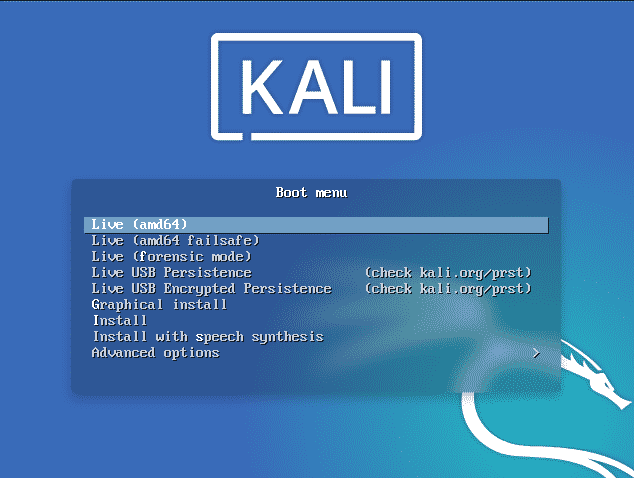

You can now boot from this USB to load Kali Linux live session. Your Kali Linux live USB is ready for use. Upon completion, close Balena Etcher software. Upon completion of flashing, Balena Etcher will validate the USB drive. Ensure that there is no important data on the USB drive, as it will be wiped. Note: Use at least 08 GB USB pen drive for the purpose.

Second, insert a blank USB drive with 08 GB or more capacity. Balena Etcher software will give you 3 options.įirst, select the Kali Live ISO file from download location by clicking on the link “Flash from file”. Install Balena Etcher tool by running the installer you have just downloaded. In the meanwhile, navigate to Balena Etcher website and download Balena Etcher Flashing tool.Ĭlose the browser once the download is complete for Balena Etcher software and Kali Linux Live ISO file.

Wait for the ISO image to finish download. In the Live boot section, hover on to 64-bit Kali point release live image. Scroll down the page and look out for “Live Boot” tile. To create a Kali Linux Live USB, open a web browser and navigate to Kali Linux official website and click on the download button. This article features the method to create a Kali Linux Live USB with ISO image from official Kali Linux website. :~$ echo "/ union" | sudo tee /mnt/my_usb/persistence.This article is the first part of the series on creating an encrypted portable Kali Linux USB with persistence. :~$ sudo mkfs.ext4 -L persistence $3 /mnt/my_usb


 0 kommentar(er)
0 kommentar(er)
